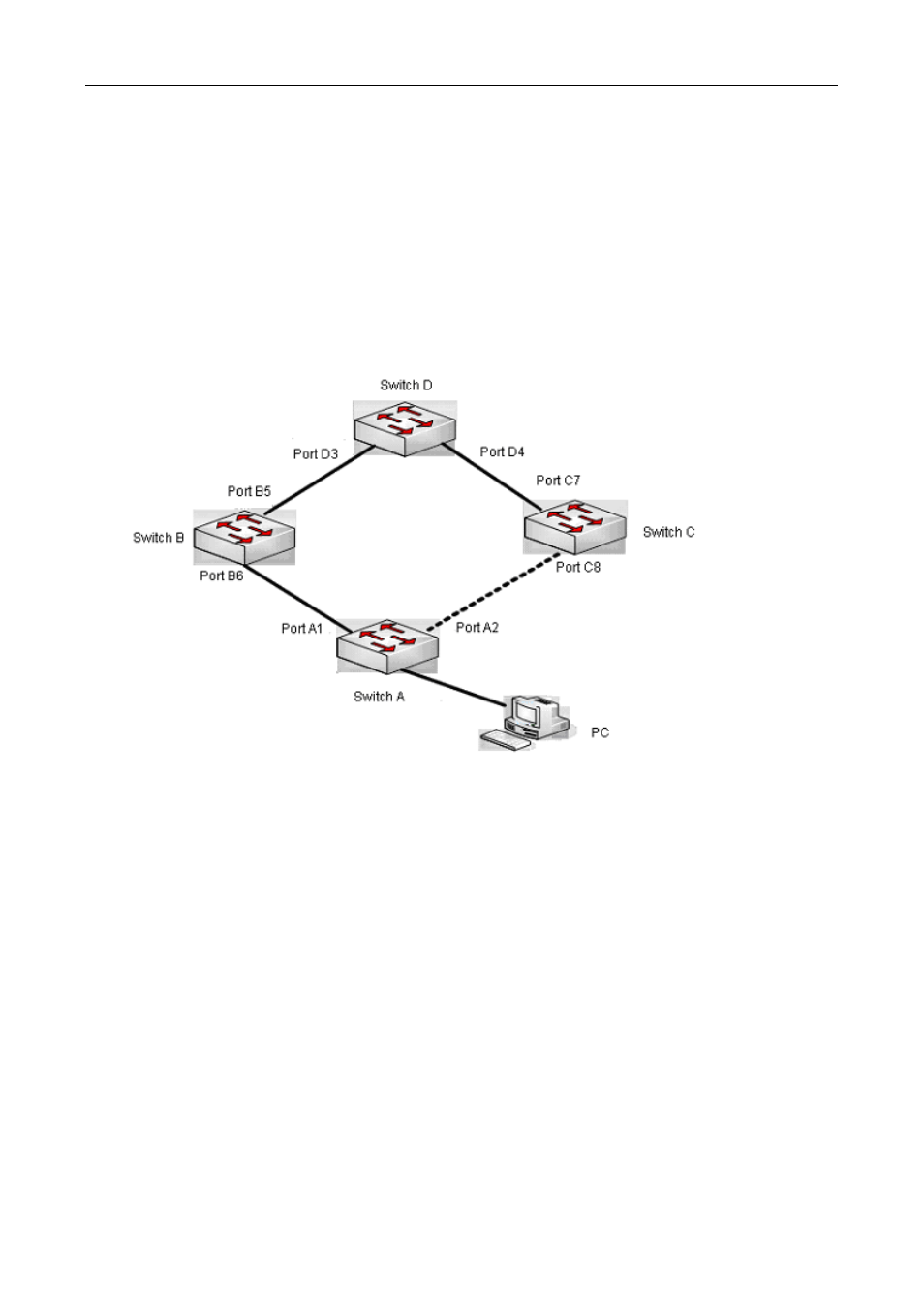Chapter 61 ulpp configuration, 1 introduction to ulpp, Ntroduction to – PLANET XGS3-24040 User Manual
Page 543: Ulpp

Chapter 61 ULPP Configuration
61-1
Chapter 61 ULPP Configuration
61.1 Introduction to ULPP
Each ULPP group has two uplink ports, they are master port and slave port. The port may be a physical port
or a port channel. The member ports of ULPP group have three states: Forwarding, Standby, Down. Normally,
only one port at the forwarding state, the other port is blocked at the Standby state. When the master port has
the link problem, the master port becomes down state, and the slave port is siwthed to forwarding state.
Figure 4-1 the using scene of ULPP
The above figure uses the double-uplink network, this is the typical application scene of ULPP. SwitchA goes
up to SwitchD through SwitchB and SwitchC, port A1 and port A2 are the uplink ports. SwitchA configures
ULPP, thereinto port A1 is set as the master port, port A2 is set as the slave port. When port A1 at forwarding
state has the problem, switch the uplink at once, port A2 turns into forwarding state. After this, when
recovering the master port, if the preemption mode is not configured, port A2 keeps the Forwarding state, port
A1 turns into the Standby state.
After the preemption mode is enabled, so as to the master port preempts the slave port when it recovered
from the problem. For avoiding the frequent uplink switch caused by the abnormity problem, the preemption
delay mechanism is imported, and it needs to wait for some times before the master port preempt the slave
port. For keeping the continuance of the flows, the master port does not process to preempt by default, but
turns into the Standby state.
When configuring ULPP, it needs to specify the VLAN which is protected by this ULPP group through the
method of MSTP instances, and ULPP does not provide the protection to other VLANs.
